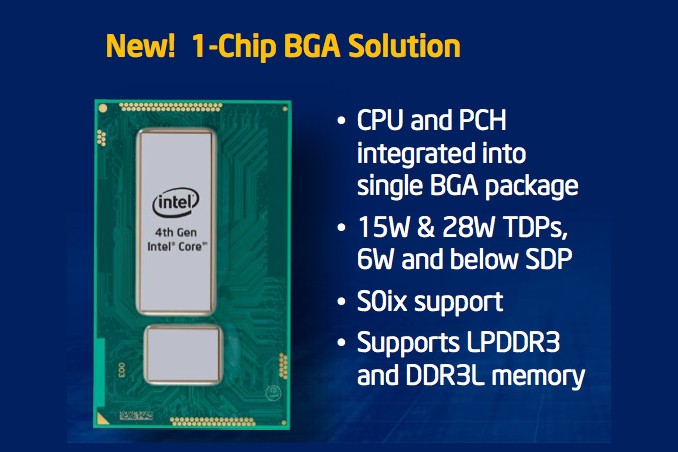With virtually no competition on the performance front when it comes to traditional computers, but much to be gained in the mobile space, Intel has been increasingly focusing on power efficiency. Haswell has already gone a long way improving battery life on ultra thin notebooks, and now, the company is making good on its promise to follow up with lower power variants by announcing a new Y-series part carrying a 4.5W SDP.

For those unfamiliar with Intel's new power rating, SDP stands for scenario design point and is specific to Y-series SKUs. AnandTech explains how the chipmaker comes up with this number and how it differs from TDP:
Intel calculates TDP by looking at average power through a set of benchmarks that tend to include some of the worst case offenders on a desktop or notebook PC. The SDP thermal rating uses a lesser set of benchmarks, more appropriate for a thin tablet chassis, to determine average power. If you run Furmark on one of these parts and the OEM building the system does nothing to thermally manage the platform, it'll dissipate 11.5W. If you use it like a tablet, you should see 4.5W (or 6W depending on the SKU) as the average power dissipated.
In simpler terms, for typical tablet workloads (web browsing, email, gaming, video playback, etc.), the chip should be able to fit comfortably inside a chassis designed to cool only 4.5 watts worth of heat. According to AnandTech, that means it's possible to get Haswell in a fanless tablet design.
Whether that actually happens remains to be seen. Much like the 6W SDP Haswell Y-series parts unveiled in January, these will only be available in limited quantities, which may serve as an indication that there are no big plans or design wins behind Haswell ULT yet. It's still a testament to Intel's commitment getting its latest processors down the power scale, enough to pose a serious threat to ARM eventually.
It'll also be interesting to see how Samsung's 10.1 inch Galaxy Tab 3 fares in the market. The device is powered by an older Atom Z2560 "Clover Trail+" processor, but it's the first Intel Android device released in the US, and from a big name manufacturer no less. Intel sure needs the OEM support to gain a foothold in the mobile space.